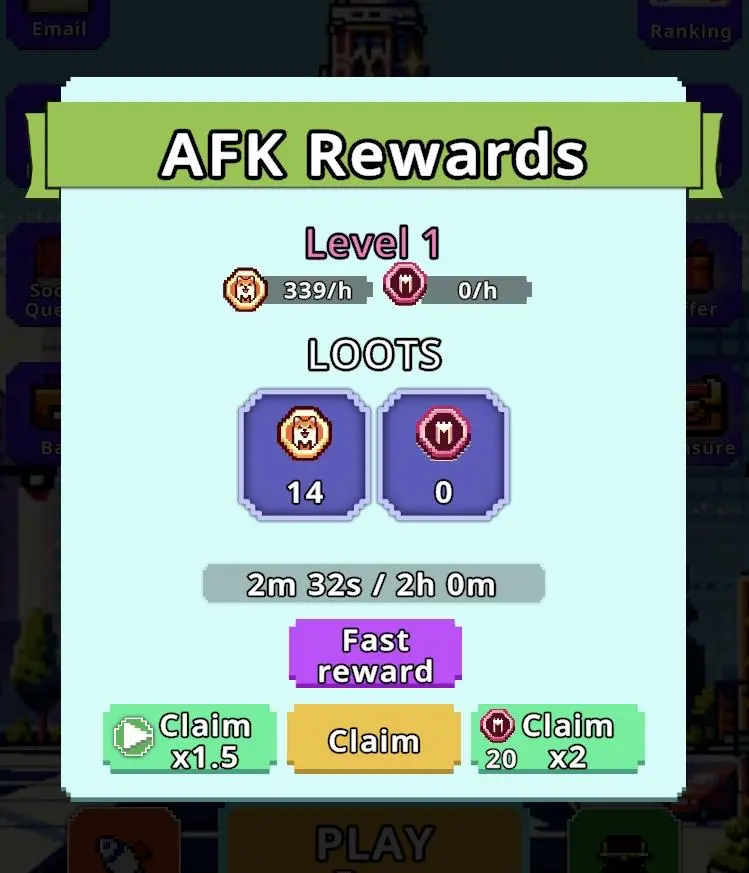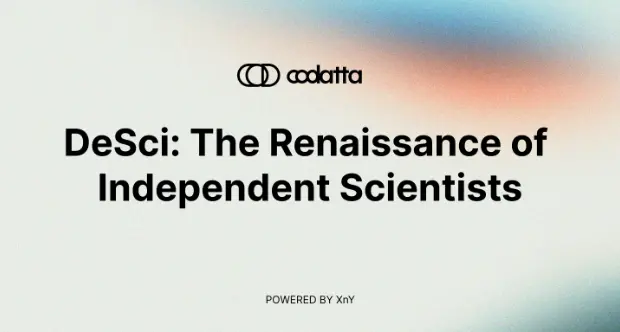Can the once-leading game sidechain Ronin still hatch the next Axie after its plummet?
Author: Kasou Kazoku
In the volatility of digital currencies, the performance of the Ronin Network is particularly noteworthy. According to Coingecko data, the token Ronin, which is an Ethereum sidechain, has seen an astonishing increase of 50.41% in just one week, with the latest price at US$1.60 and a 12.56% price rise in the past 24 hours. This significant growth is not just a numerical change but a direct reflection of Ronin's potential and influence in the digital currency market.
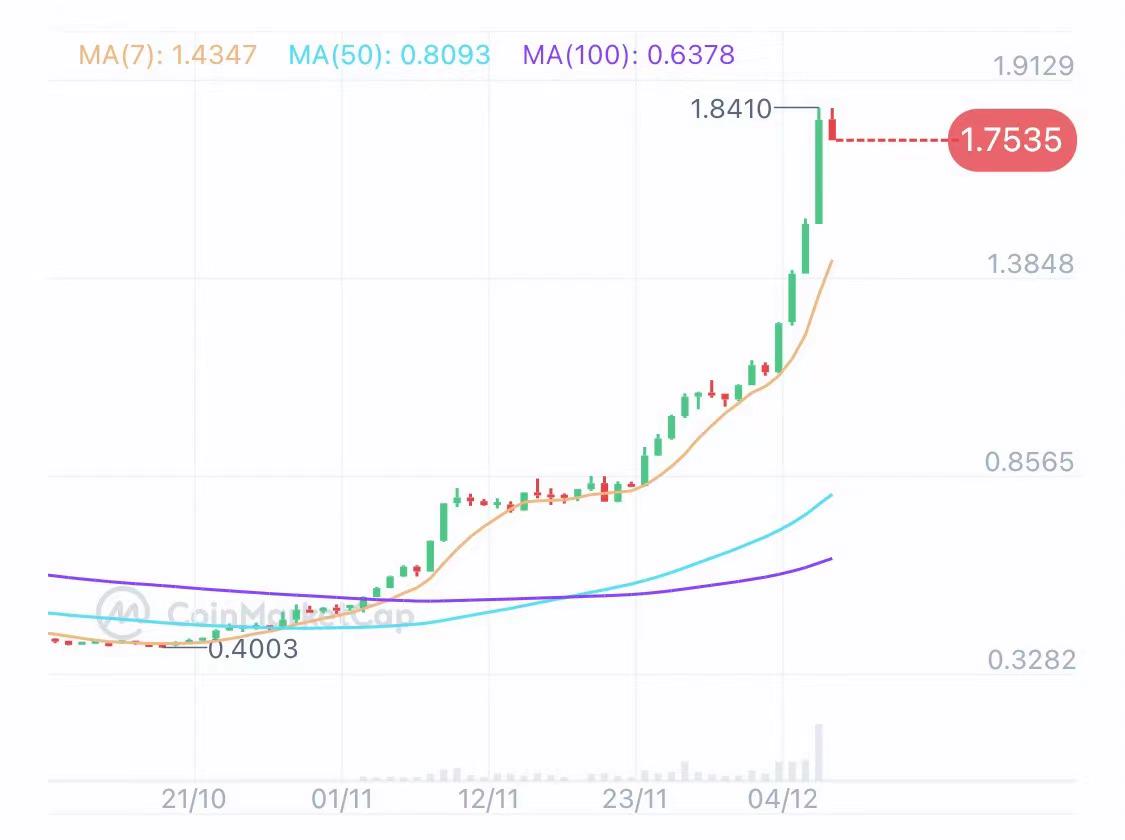
RON Asset Price Trend
Further data from Nansen shows that the number of active wallet addresses on the Ronin network has doubled recently, soaring to over 7,000. The main driver behind this growth is the influx of popular games choosing to join the Ronin ecosystem. Notably, the P2E MMO game Pixles successfully migrated to Ronin at the end of October, attracting many new users and significantly boosting network activity. The collaboration between Sky Mavis and South Korean gaming giant ACT Games has further deepened Ronin's influence in the gaming sector.
Additionally, on November 8, Zoids Wild Arena successfully migrated from Polygon to Ronin, further validating the strong appeal of the Ronin public chain. At the same time, Ronin has partnered with four well-known game studios: Directive Games, Bali Games, Tribes Studio, and Bowled.io. These studios are leveraging Ronin's technological advantages to launch innovative gaming experiences. Notably, Directive Games' Machines Arena has already been tested on PC and plans to launch on the Epic Games Store. Even more exciting, this game will feature cross-platform functionality, with future releases planned for iOS and Android.
The Ronin network is steadily building its leadership position in the gaming public chain industry through rapid data growth and close collaboration with major game studios. Below is a brief introduction to the Ronin project.
Committed to Providing Cost-Effective Gaming Public Chain Services, Ronin Has Recently Achieved Good Data Performance
The birth of the Ronin public chain marks a direct response to issues such as high fees, low speed, and complex user experience present in the Ethereum network. As an EVM-compatible chain designed specifically for gaming, Ronin offers a smoother and more seamless gaming experience through its sidechain technology. Launched by the founding team of Axie Infinity, Sky Mavis, this public chain has already demonstrated its immense potential in the NFT trading market, processing over $4 billion in transactions while attracting millions of daily active users.
Over the past year, the Ronin ecosystem has seen significant expansion. The team is dedicated to its unique Web3 values, particularly focusing on the idea of "cultivating the first 1,000 loyal fans." By gradually introducing new games and feature expansions, along with continuous technological advancements, Ronin has not only retained existing Axie fans but also attracted a large number of new users.
Recently, the fluctuations in SLP prices have brought a new perspective to the games within the ecosystem. In the past 30 days, the number of active addresses on Ronin has increased by 108%, with daily active wallet numbers exceeding 35,000, primarily driven by gaming wallets. This growth is largely attributed to the recent popularity of certain games. As the native token of the ecosystem, RON's usage has increased alongside user activity. Meanwhile, as ecosystem activity grows, Ronin's treasury continues to expand. Currently, 0.05% of all fees from Katana DEX and 0.5% of RON market fees will flow into the treasury.
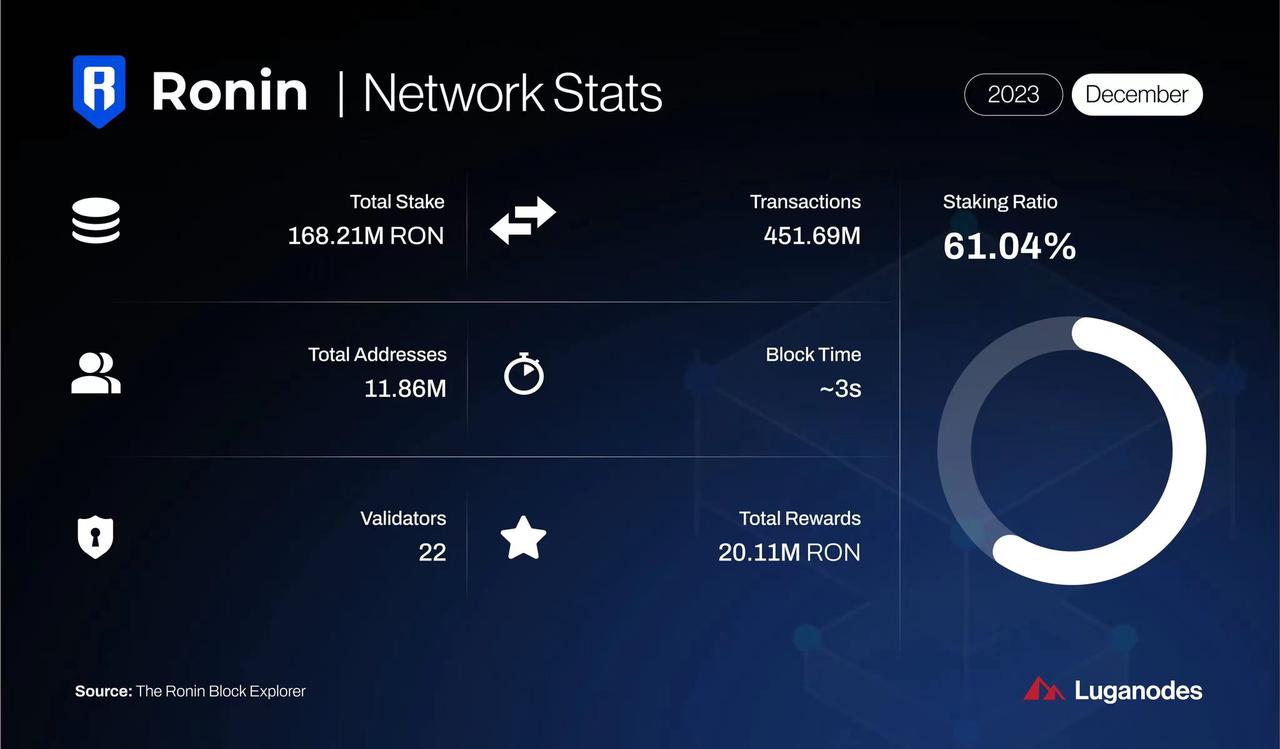
Data Performance of the Ronin Network
Although RON currently lacks an effective value accumulation mechanism, with the growth of the user base and the accumulation of RON fees, the community expects the DAO to effectively manage these resources and explore ways to reduce the token's circulation. Ronin demonstrates strong ecosystem potential by continuing to launch new games, attract new users, and maintain technological advancements.
Understanding the RON Token Economic Model: Will It Continue to Decline After Falling from $3 to $0.2?
The Ronin chain, an EVM-compatible chain tailored for gaming, not only provides players with a seamless gaming experience but also plays multiple key roles within the ecosystem through its token RON. The economic mechanism and functional design of RON directly reflect the vitality and growth potential of the Ronin ecosystem.
The market performance of RON has experienced fluctuations. Since its debut in the secondary market in January 2022, RON's price initially hovered around $3. However, in the face of an overall downturn in the crypto market and security incidents affecting Ronin, the price once fell to about $0.2. Subsequently, RON experienced a significant rebound, showcasing market confidence in the recovery and development of the Ronin ecosystem.
The total supply of RON is one billion, with its functions and value primarily concentrated in the following areas:
- Transaction fee payment: As trading activities on the Ronin chain increase, RON is used to pay network service fees to maintain the system's efficient operation.
- Network security and staking: RON supports the security and decentralization of the network, attracting nodes to participate through a validator staking consensus mechanism and supporting the healthy operation of the network through a reward system.
- Participation in governance decisions: RON also grants holders voting rights in network governance, promoting community member participation in important decisions and enhancing the transparency and consensus of the entire ecosystem.
Regarding the distribution of RON, Sky Mavis holds 30% of the RON token supply, which is used for various purposes, including employee bonuses and shareholder token contracts. Of this, 22.35% belongs to the company's balance sheet, and 7.65% belongs to equity shareholders. The community accounts for 30%, with staking rewards at 25%.
Additionally, the ecosystem fund accounts for 15% of the total RON supply, aimed at supporting initiatives that enhance the Ronin network. On April 27, 2022, approximately 6 million RON were donated to the ecosystem fund, indicating a commitment to ongoing investment and development of the ecosystem.
As of now, the unlocking status of the Ronin (RON) token is as follows: approximately 445.9 million RON have been unlocked, accounting for about 44.59% of the total supply. The remaining locked tokens total approximately 554.07 million RON, accounting for 55.41% of the total supply. In terms of distribution, community incentives account for 30%, Sky Mavis for 30%, staking rewards for 25%, and the ecosystem fund for 15%. Specifically, the unlocked amounts are approximately 186.24 million RON for community incentives, 68.93 million RON for Sky Mavis, 98.09 million RON for staking rewards, and 71.45 million RON for the ecosystem fund.
Overall, as a key component of the Ronin chain, RON's economic mechanism and distribution strategy play an important role in promoting the healthy development of the ecosystem. As applications and services on the Ronin chain continue to grow, RON's diverse value and strategic importance will further emerge.
The Competition in the Gaming Public Chain Market Is Fierce, and Ronin's Future Is Full of Uncertainty
From the current market situation, Ronin faces unique challenges and opportunities compared to other gaming public chains.
Currently, Ronin's market valuation is slightly lower than its competitors Immutable X and WAX, reflecting its relatively smaller ecosystem scale, user base, and number of applications. Nevertheless, Ronin has achieved significant development in its early stages due to its focused design on gaming needs and the traffic advantage of having Axie Infinity as a flagship game.
In terms of the competitive landscape, Ronin faces various challenges and opportunities:
- Competition from traditional multifunctional public chains: Chains like BSC and Polygon have become the primary choice for GameFi projects due to their strong technology and broad user base.
- Challenges from specialized gaming public chains: Public chains like Hive and Harmony, which focus on gaming applications, attract users with their unique gaming advantages.
- Competition from other gaming-specific sidechains: Sidechains that also focus on gaming pose direct competition.
Ronin's advantage lies in its customized design and close integration with Axie Infinity, providing initial traffic and a user base. At the same time, Ronin's nearly zero gas fee design reduces user costs and enhances its attractiveness. However, Ronin also faces challenges in expanding its gaming ecosystem, enhancing security, and improving interoperability with mainstream public chains.
In the future, as GameFi rapidly develops and cross-chain technology matures, Ronin will need to continuously innovate and improve to maintain its competitiveness in the gaming chain industry. This includes attracting more developers to join its ecosystem, providing richer gaming applications, and enhancing collaboration and interoperability with other mainstream public chains.
Overall, Ronin's future will depend on how it responds to the current competitive landscape and challenges, as well as how it innovates and adapts in the ever-changing GameFi field. By continuously improving its platform and ecosystem, Ronin has the potential to solidify and expand its core position in the blockchain gaming sector.
The Future Performance of Ronin Remains to Be Seen, and Developer Deployment Becomes the Core Force Determining Ecosystem Development
Recently, the Ronin public chain has demonstrated its continuous vitality and innovative capabilities in the cryptocurrency and gaming chain fields. According to official Twitter news, on November 16, the public sale of Ronin Name Service (RNS) has officially launched, along with a 48-hour auction for selected high-value .ron domain names. This initiative not only increases the value of the Ronin ecosystem but also further strengthens its integration with important applications such as Ronin Wallet, Ronin Explorer, Mavis Market, App.Axie, and Sky Mavis Account Service.
On the other hand, on December 6, official news revealed that the DeFi protocol Impossible Finance will deploy its Launchpad on the Ronin network, providing developers and game studios on Ronin with a new avenue to launch their own ERC-20 tokens. This move will promote the growth of more innovative projects within the Ronin ecosystem and may also involve staking and distribution using tokens like RON, AXS, and IDIA.
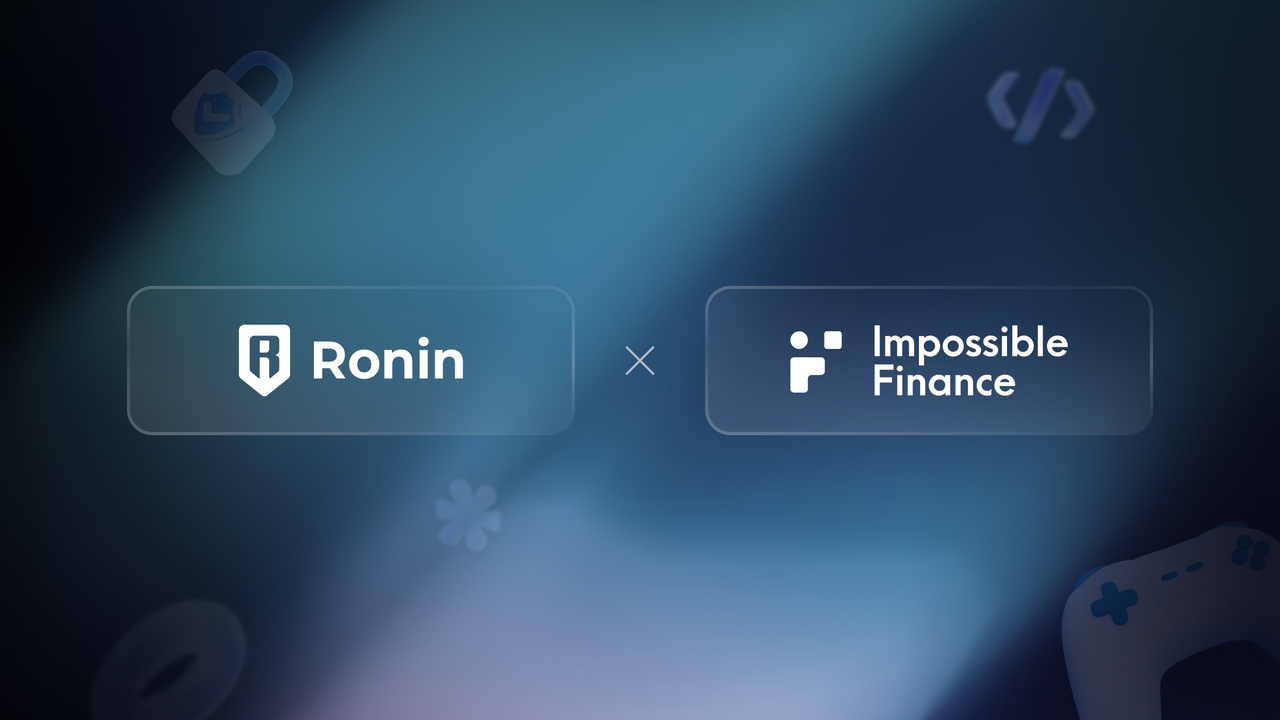
These developments indicate that Ronin is actively expanding its influence and functionality in the blockchain gaming field. Through the launch of RNS and the collaboration with Impossible Finance, Ronin not only enhances its technical infrastructure but also brings more opportunities and conveniences to its user and developer community. As more applications and services choose to deploy on Ronin, we can foresee that Ronin will continue to play an important role in the gaming chain market and may become a significant force driving innovation in blockchain gaming.





